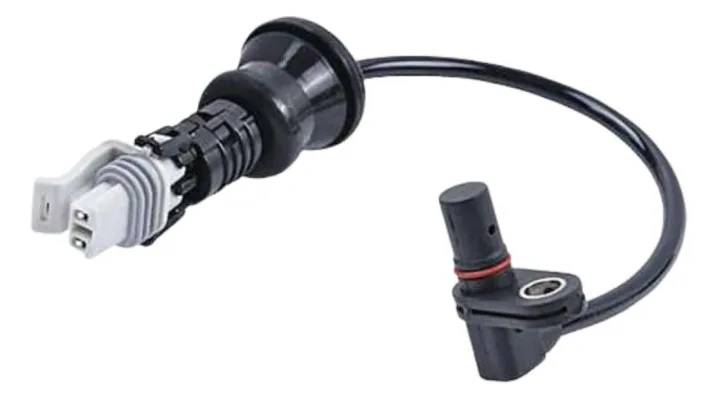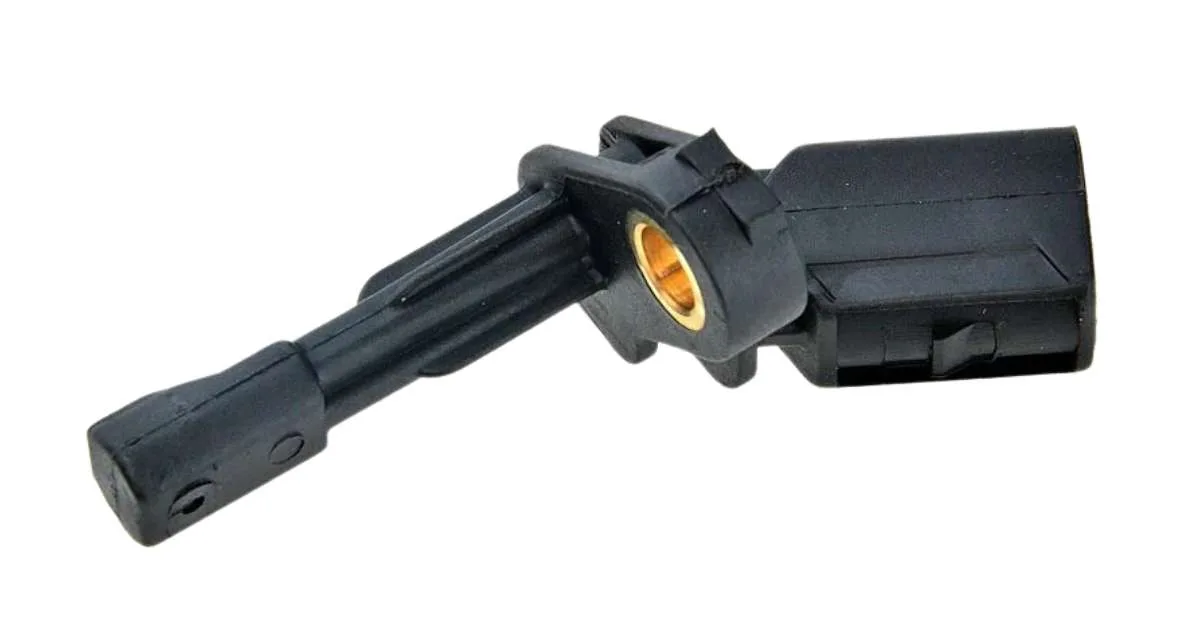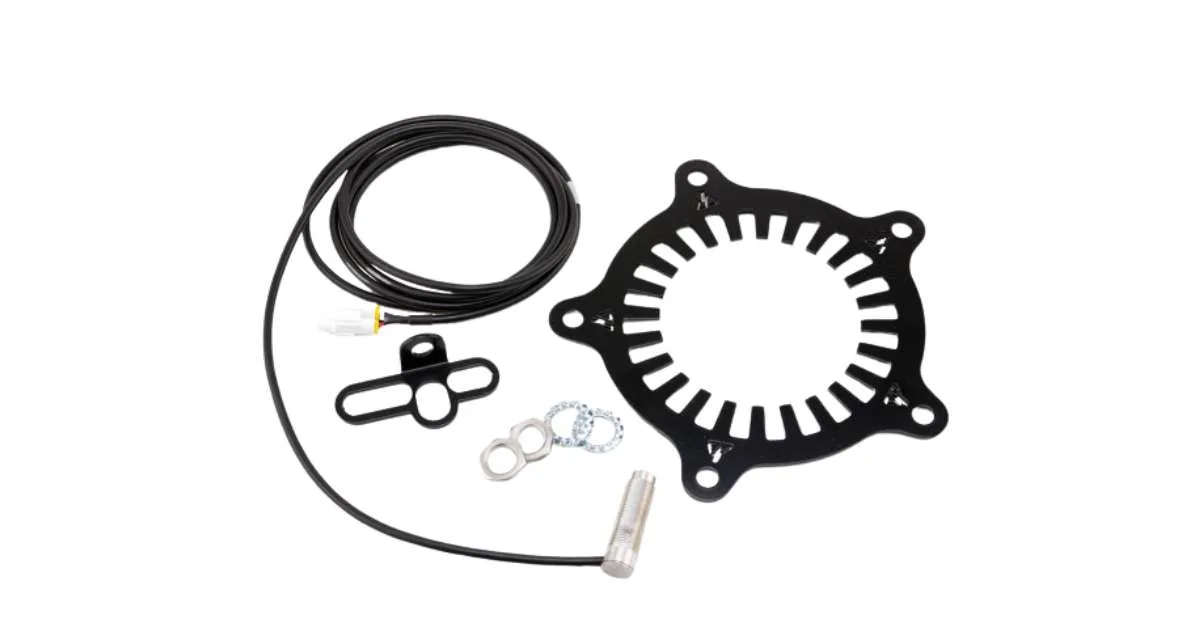
Wheel speed sensors are crucial for a vehicle's safety and performance systems. They monitor wheel speed and provide essential data.
Modern vehicles rely on wheel speed sensors for a range of functions, from anti-lock braking systems (ABS) to traction control. These sensors are the unsung heroes that keep us safe on the road, constantly feeding information to the car's computer to ensure optimal performance and stability. There are several types of wheel speed sensors, each with a unique role in vehicle dynamics and safety systems. Understanding the different types is essential, whether you're a car enthusiast, an automotive student, or simply a curious driver looking to understand more about the inner workings of your vehicle. This introduction sets the stage for a deeper dive into the various wheel speed sensors available, their functions, and why they are integral to the modern automobile. Join us as we explore the vital world of wheel speed sensors and their impact on your driving experience.Introduction To Wheel Speed Sensors
Wheel speed sensors are key components in modern vehicle safety. They fall into two main categories: active and passive. Each type plays a crucial role in systems like ABS, helping ensure stable and controlled driving. Wheel speed sensors are critical components in modern vehicles. They monitor wheel speed and send data to the car's computer. This info helps control systems like ABS and traction control. Without accurate wheel speed data, these systems can't work properly.Role In Vehicle Safety
Wheel speed sensors play a vital role in keeping drivers safe. They allow safety features to respond to real-time conditions. For instance, ABS prevents wheels from locking during a stop. This helps maintain control and reduce stopping distances.Evolution Through The Years
From simple mechanical designs to advanced hall-effect sensors, wheel speed sensors have evolved significantly. Early versions were basic and prone to errors. Modern sensors offer greater accuracy and reliability. They are now essential for advanced driver assistance systems (ADAS). Magnetic Inductive Sensors
Magnetic Inductive Sensors
Magnetic Inductive Sensors
Magnetic Inductive Sensors play a key role in monitoring wheel speed. They are crucial for the safety and performance of vehicles. These sensors use the principles of magnetism to detect speed. They are reliable and efficient. Let's delve deeper into how they work and where they are used.Operating Principle
Magnetic inductive sensors have a simple yet effective design. They consist of a coil and a magnetic field. As a toothed wheel spins, it changes the magnetic field. This change creates an electrical signal. The signal's frequency shows the wheel's speed. Easy to understand, right?Common Applications
These sensors find use in various areas. Most commonly, they are in cars and bikes. They help in controlling ABS (Anti-lock Braking System). This ensures the vehicle stops safely. They are also in industrial machines. Here, they monitor the speed of moving parts. This helps in keeping machines running smoothly.Hall Effect Sensors
When talking about wheel speed sensors, Hall Effect sensors stand out for their precision and reliability. These sensors play a crucial role in the automotive industry. They detect the speed of a vehicle's wheels and send this information to various systems.Design Characteristics
The design of Hall Effect sensors involves a simple yet effective mechanism. A Hall Effect sensor uses a semiconductor that responds to magnetic fields. As the wheel turns, the sensor detects changes in the magnetic field. It then converts these changes into electrical signals. These signals are sent to the vehicle's computer system.- Small in size: They fit easily into various applications.
- Consistent output: They provide steady signals for accurate readings.
- Resistant to dirt and debris: This ensures long-lasting performance.
Advantages Over Inductive Sensors
Hall Effect sensors have several advantages over traditional inductive sensors. Their digital output signal is precise and immune to electrical noise. This makes them ideal for modern vehicles.| Hall Effect Sensors | Inductive Sensors |
|---|---|
| Accurate at low speeds | Less accurate at low speeds |
| Immune to vibration | Sensitive to vibration |
| No moving parts | Mechanical parts wear out |
Optical Speed Sensors
Optical speed sensors stand out among wheel speed detectors. They use light to measure how fast a wheel spins. These sensors are crucial for systems that need precise speed readings.How They Work
Optical speed sensors shine a light beam onto a rotating disk. This disk has marks on it. As the disk spins, the marks interrupt the light beam. The sensor counts these interruptions to figure out the wheel speed.- Light emitter: Sends out a light beam.
- Coded disk: Attached to the wheel; has light and dark areas.
- Receiver: Detects the light beam and sends signals.
Limitations In Automotive Use
Optical speed sensors have some drawbacks in cars.- Dirt and grime can block the light beam.
- They need clear marks on the disk to work well.
- Extreme temperatures can affect their accuracy.
Magneto Resistive Sensors
Magneto Resistive Sensors are key in modern cars. They track wheel speed. This info helps in safety and efficiency.Functionality Explained
These sensors use magnetic fields. They change with wheel speed. This change tells the car's computer about the speed. It's smart and precise.- They spot the magnetic field change.
- The car's system gets this info.
- It helps control the car's speed and safety features.
Benefits In Modern Vehicles
Magneto Resistive Sensors bring big benefits:- Better safety. They make brakes work better.
- More control. Help with stability on the road.
- Efficient. Improve fuel use and reduce wear.
Comparing Sensor Types
Understanding wheel speed sensors is crucial for vehicle safety and performance. Different types have unique features. Let's compare these types.Accuracy And Reliability
Two main wheel speed sensors exist: active and passive. Active sensors are highly accurate. They use magnetic fields to detect wheel speed. This technology ensures consistent performance, even at low speeds. Passive sensors, on the other hand, rely on electromagnetic induction. They are less precise than active sensors, especially when the vehicle is moving slowly.- Active sensors maintain accuracy across speed ranges.
- Passive sensors can struggle with low-speed detection.
Cost Considerations
Cost is a key factor in sensor selection. Passive sensors are generally more affordable. They have simpler designs and don't need external power. In contrast, active sensors are more costly. They require more complex circuitry and power, which increases their price.| Sensor Type | Cost |
|---|---|
| Active | Higher |
| Passive | Lower |
Installation And Maintenance
Wheel speed sensors play a crucial role in a vehicle's braking system. Proper installation and maintenance ensure they work well. This section focuses on how to install them right and keep them in top shape.Best Practices
Start by choosing the right sensor for your vehicle. Each model needs a specific type. Read the manual carefully. It has all the steps. Make sure the area is clean before you start. Dirt can cause problems. Use the right tools. They make the job easier and safer. Check the sensor's position. It should fit perfectly. Test the sensor after installation. This ensures it works as expected.Troubleshooting Common Issues
Sometimes, sensors stop working. A few signs include ABS light turning on or brakes not working well. First, check for dirt. Dirt can block the sensor's signal. Next, look at the wires. Broken wires mean no signal. Lastly, test the sensor. Some tools can check if it's working. Replace the sensor if it fails the test. Future Trends In Wheel Speed Sensing
Future Trends In Wheel Speed Sensing
Future Trends In Wheel Speed Sensing
Wheel speed sensors have evolved significantly over the years. They are crucial for vehicle safety and performance. As the automotive industry strides towards a more technologically advanced future, wheel speed sensors are not left behind. New trends in wheel speed sensing are shaping the way we think about vehicle dynamics and safety. Let's explore these exciting developments.Technological Advancements
The latest wheel speed sensors boast impressive features. They are more accurate and reliable than ever. These sensors use cutting-edge technology. They can detect wheel speed with precision. Manufacturers aim for robust designs that withstand harsh conditions. This means better performance over the sensor's lifetime. Such advances help in various driving scenarios. They contribute to the effectiveness of anti-lock braking systems.Impact On Autonomous Vehicles
Autonomous vehicles rely heavily on accurate data. Wheel speed sensors play a big part in this. They provide vital information for navigation and safety systems. With better sensors, self-driving cars can make smarter decisions. This leads to safer roads for everyone. The future of autonomous driving depends on such sensor improvements. Wheel speed sensors will continue to be a key component. They will ensure the smooth operation of these advanced vehicles.Frequently Asked Questions
What Are Wheel Speed Sensors Used For?
Wheel speed sensors are crucial for modern vehicles' anti-lock braking systems (ABS). They monitor each wheel's speed, ensuring optimal braking performance and stability control. This information helps prevent wheel lock-up during braking, enhancing safety and vehicle control.How Many Types Of Wheel Speed Sensors Exist?
There are primarily two types of wheel speed sensors: passive and active. Passive sensors, older and simpler, generate a signal through electromagnetic induction. Active sensors, on the other hand, use a power source to generate a more accurate and reliable signal.Can Wheel Speed Sensors Affect Vehicle Performance?
Yes, faulty wheel speed sensors can significantly affect vehicle performance. They can cause the ABS warning light to illuminate, reduce the effectiveness of ABS, lead to uneven brake wear, and even impact the vehicle's traction control and stability systems.How Do I Know If My Wheel Speed Sensor Is Faulty?
Common signs include the ABS light turning on, brakes locking up under heavy braking, decreased ABS effectiveness, and sometimes, the speedometer may malfunction. If you notice these signs, it's advisable to have your vehicle checked.Conclusion
Understanding wheel speed sensors helps ensure your vehicle's safety and performance. These sensors come in various types. Each one plays a key role in monitoring wheel speed. They send vital data to your car's systems. This helps with stability, traction, and anti-lock braking. Remember, a well-maintained sensor keeps you safe on the road. It's important to know the differences and functions of each type. Regular checks are essential. This way, your vehicle stays in top shape. Safe driving starts with the right information and care for your car's parts.Disclosure
Some links may be affiliate links. That means we may earn a small commission at no extra cost to you.